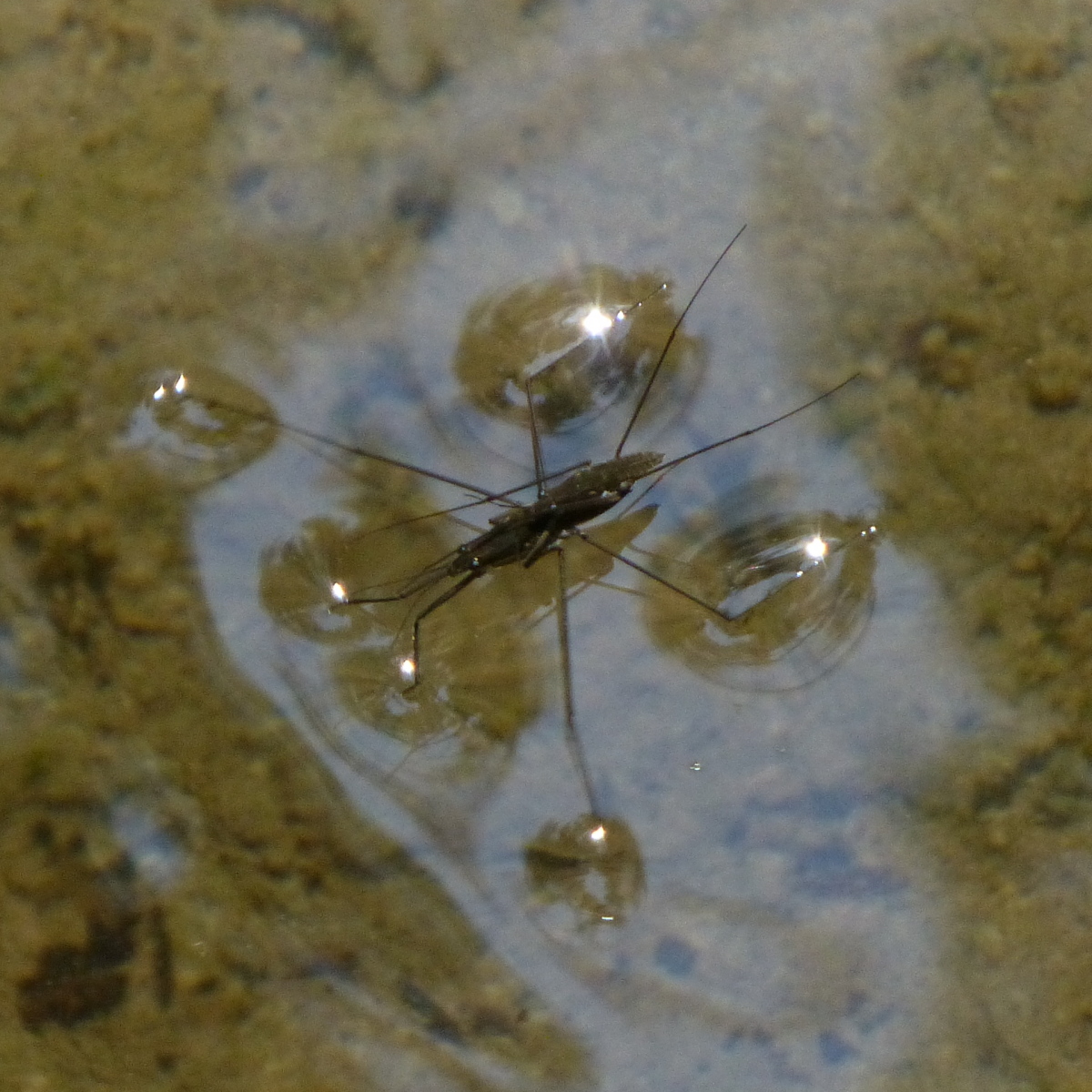Robots that jump on water
Interview with
Scientists have developed a tiny robot - based on the pond skater or water strider  insect - which can jump on water. Four thin wire legs extend from a vee-shaped central "body" of the robot and allow it to sit on the water surface. Across the apex of the vee is a spring system, which works like a catapult, releasing energy to bend the vee-shape and push the legs down against the water, propelling the robot off the surface, exactly as the real insect does it. Science reporter Victoria Gill talked Chris Smith through the story...
insect - which can jump on water. Four thin wire legs extend from a vee-shaped central "body" of the robot and allow it to sit on the water surface. Across the apex of the vee is a spring system, which works like a catapult, releasing energy to bend the vee-shape and push the legs down against the water, propelling the robot off the surface, exactly as the real insect does it. Science reporter Victoria Gill talked Chris Smith through the story...
Victoria - This is a new robot which jumps on water. This is researchers from Seoul National University in South Korea and they have taken water striders, literally collected them from a local pond and they've been studying them with high speed cameras and looking at the mechanism by which they jump because water striders are unique in that they can jump from the surface of water without breaking that water surface. So, these researchers wanted to find out how and then create a robot that copied that mechanism, and that's what they've done.
Chris - Before we come on to how they actually do it, why is this important? Why do we need to know how they do this?
Victoria - There's a lot of interest in getting robotics into situations where we wouldn't be able to get ourselves whether that's miniaturisation or whether that's moving through and across surfaces, and dangerous places that we wouldn't be able to access. Obviously, there's military applications for that, but these researchers really wanted to drill down into how this biology works so they could apply it to bio-robotics. They suggest that there might be surveillance for environmental purposes. If you're looking at working in watery surfaces and there's also search and rescue applications.
Chris - So, what did the videos reveal? How do these insects do this?
Victoria - What they were looking at is water strider's skinny little legs and how they make contact with the water. But then how they move their legs as they press down with a downward force and you get an opposite upward force, pushing them off the surface of the water. While most jumping insects apply a high force very quickly, the maximum force is that initial push off of the ground. If you do that on water, you break the surface tension of the water. So, you can't truly jump off the surface.
Chris - And you would sink of course.
Victoria - And you would sink, exactly and there are some jumping insects that sort of compromise their jumping abilities when they're on water by utilising the viscosity of water and having very, very light bodies and being structured in a particular way so that they can utilise that and still get some sort of jump. But water striders can jump just as well off the surface of water as they can on land and that's all about how they jump. So the crucial thing is to apply a force gradually that never exceeds the force that's holding those water molecules together. So, it never exceeds the surface tension of the water. That's what they saw in the water strider and what they've been able to copy. So, it's a jumping mechanism that gradually applies a force and the force never exceeds the surface tension of the water.
Chris - So now we know what we've got to achieve with the robot, but looking at the insect for a minute, do they have any idea how they achieved that graded force like that so they don't penetrate the surface of the water?
Victoria - Essentially, what they use is called the 'torque reversal catapult'. That's the mechanism. Now, this is essentially a spring and this was first seen in flea legs - fleas being these incredible jumpers that actually, biologists and bio-roboticists are really interested in their incredible abilities to jump so high and so fast. What they do is ratchet up kinetic energy stored in a spring and that sort of torque moving in one direction. You can imagine that spring then moving through, rotating around that joint and then suddenly, all the torque is moving in the other direction. So, that's a sort of innate, in-built catapult that stores that kinetic energy and then releases it very, very quickly. But they tune that catapult in order to release that energy gradually and to never exceed the force of the surface tension of the water.
Chris - Does this mean then that we can do this, but we can only do it with very, very tiny robots or will it scale up to bigger things?
Victoria - I asked that actually and at the moment, it's purely miniaturisation and this has actually been a long process to build something that would be the right weight. They've had to use a very, very hydrophobic or water repelling material to be able to create these little skinny legs that don't break the water surface. So, there's been a lot of fine tune mechanics to create a light-bodied skinny legged insect robots. So at the moment, this couldn't be scaled up. The dynamics just wouldn't work in the same way.










Comments
Add a comment